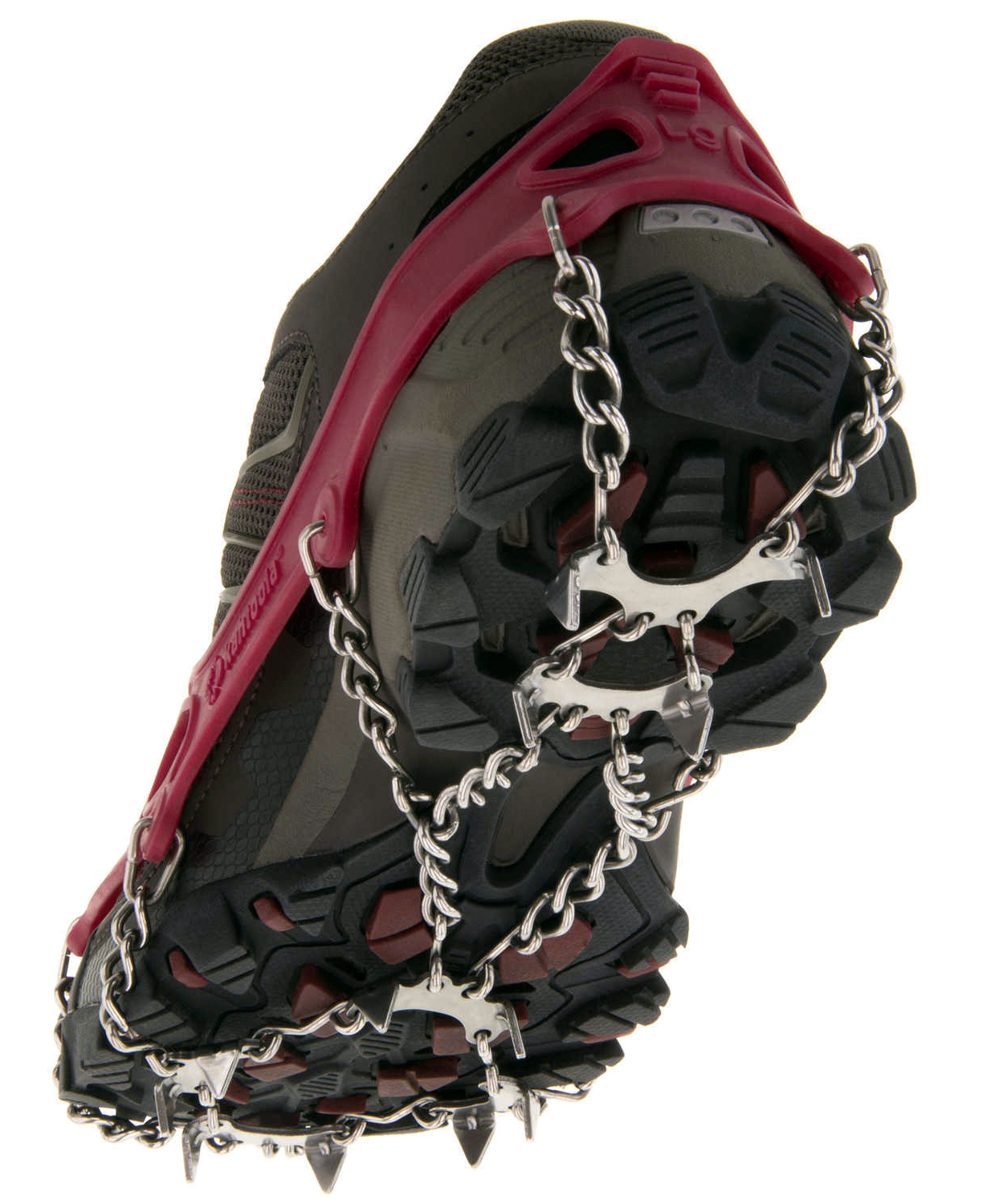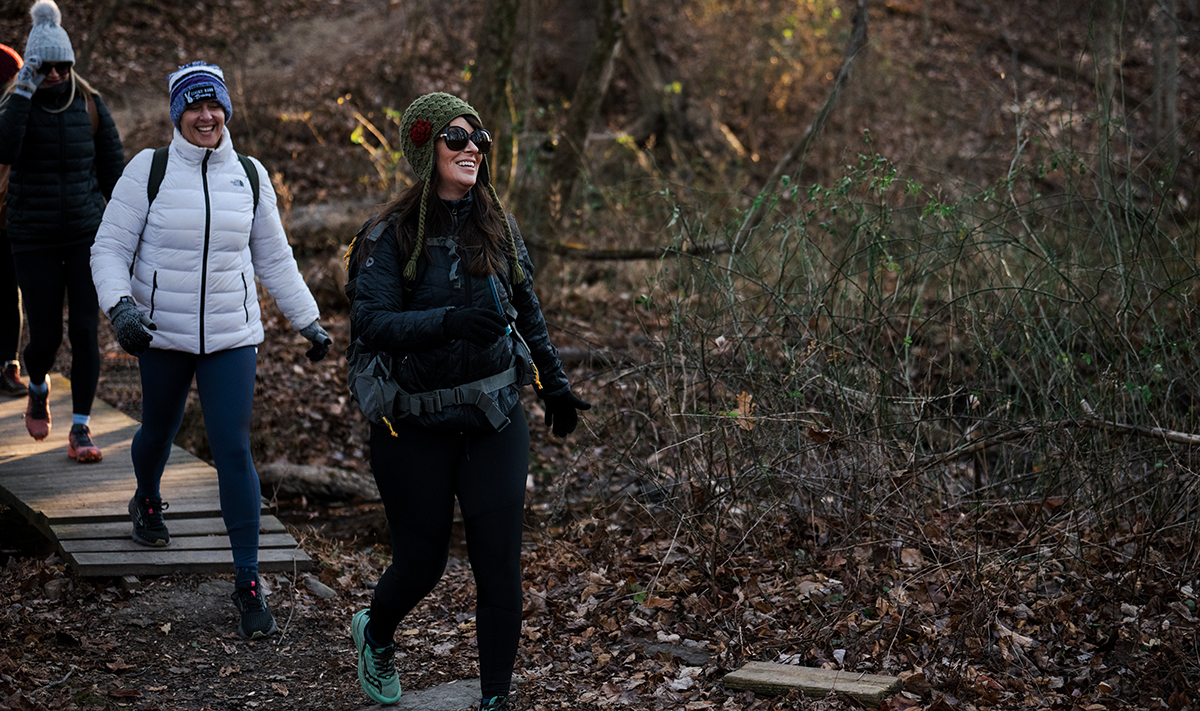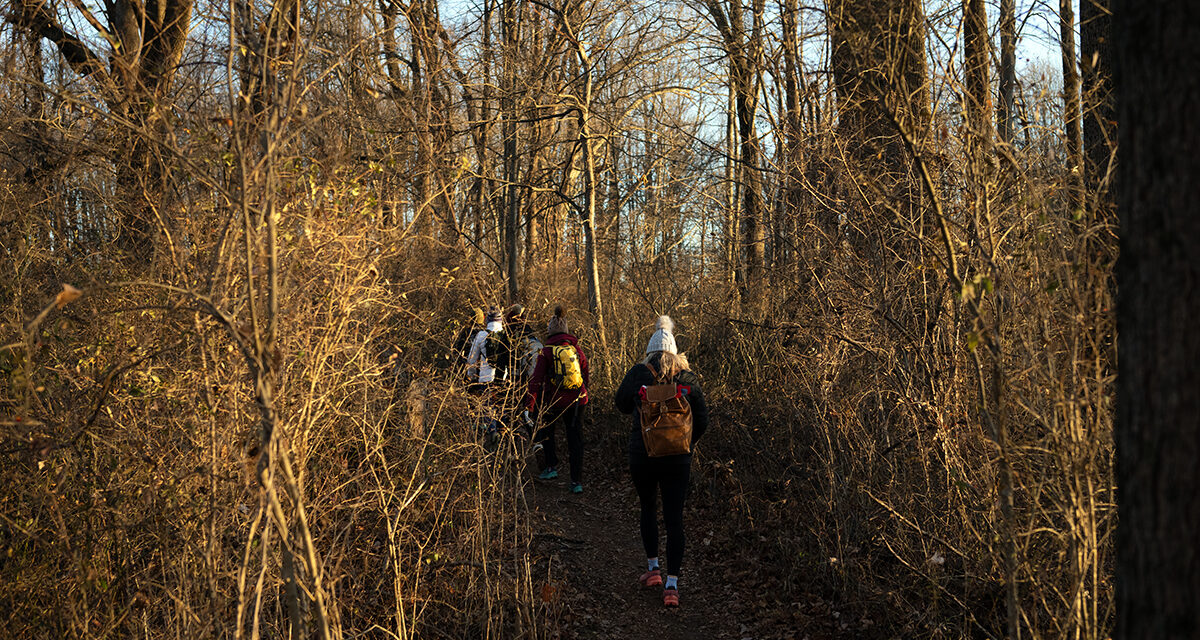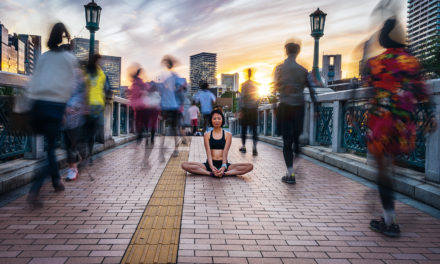Don’t let the winter blues get you this year. Instead, venture out into the wilds of our serene and stunning wonderland.
As the squirrels gather their nuts and the first frost descends, many of us humans living on the East Coast start our November/December ritual of digging out our winter boots and the gloves that haven’t lost their mate and start thinking about hibernating alongside the black bears and groundhogs. But if you can bundle up and tough out the cold, you’ll realize that winter is one of the best times of year for hiking, especially in New Jersey and Pennsylvania.
As someone who has long struggled with seasonal affective disorder (SAD) in the winter months, last year I changed the game by simply going outside—even on the most frigid winter days. I learned being down-and-out indoors was more difficult than if I merely changed my location to the other side of the window. Being outside, on my darkest days, always made things a little easier. I could see things differently. Winter engages your senses—the light, the color of the sky, even the smells are fresher. Icelanders call this ütilykt, which translates to “outdoor smell.”
The feel of the bitter cold air entering my nose and lungs and the sensation my skin felt against the frigid air changed my perspective. I found it invigorating, not depressing. It made me feel awake instead of sluggish. That’s when the walks began. Every day, even if I was walking outside for just a few minutes, it made a difference in my mood. Then I got braver. I started searching for nearby hikes in the wilderness, which felt freeing, invigorating, and restorative. I felt alive. This practice became essential to surviving the long winter months, and now I crave those peaceful walks through a winter wonderland, when it feels like the forest is all mine.
The magic I found in those woods helped me heal, not just from SAD, but also from worries about the unknown future I was facing as I began healing from a spontaneous cerebrospinal fluid (CSF). After spending a month and a half in and out of hospitals, facing multiple spinal procedures, and losing my vision and ability to walk without assistance for periods, the depression was as debilitating as the physical pain. There were just two things that helped improve my mood and give me hope: the daily walks, and a weekly guided meditation session with my friend Tara.
As I continued to get stronger, I wanted to share the wonder and inspiration with other women. There is so much beautiful nature right in our backyards but so many women I know were staying inside, alone, and I was sure they too would benefit from what I was experiencing out in the woods. I started a Facebook group called Dura Mater Meditative Hikes. (Dura Mater translates to “tough mother,” and it’s also the name of the lining around your brain and spine that keeps the fluid intact.)
Now I regularly offer guided hikes, and sometimes just a handful of women join, and sometimes it’s larger groups. But no matter what, we hike and meditate, and often there are tears of joy, gratitude, and awe.
I’ve learned quickly the magic that winter offers. Without the leaves on the trees, you can see further into the woods, sometimes with a view of the water at every turn. You can hear the hawks overhead or the geese heading south. And other than the animals, we’re often the only beings in sight. It’s surreal to have this gift of nature all to us. Winter hiking delivers clarity and stimulates the soul.
Not sold yet? Here are just a few of the benefits of cold weather hiking to help you burn the winter blues.
It’s even more important during these winter months to get as much natural outdoor light as possible to benefit your overall happiness.

Gear Up for Winter
People who live in colder climates aren’t often deterred from the great outdoors simply because it’s cold. They just bundle up with the proper equipment and attire.
- Face facts. It is essential to keep your head warm with a hat or hood, but don’t forget the rest of your face. Protect your lips with chapstick, and a neck buff is a great addition that can easily pull up over your nose to protect the lower part of your face from wind and provide warmth.
- Brace yourself. Either Yak Tracks or MICROSpikes provides traction while walking on ice or snow. Prices range from $15 to $70. Off-brand options or older models are a great way to save a little money but still achieve the desired results. On rocky hikes with elevation, hiking poles really help you stay balanced. In addition, the use of poles on longer hikes helps take some of the stress off your legs and engages the use of your arms and core.
- Note from Norwegians. Take a page from the Norwegians’ book and layer up. Invest in some light, thin moisture-wicking layers. Moisture wicking pulls the sweat away from your body. Hands down, hikers prefer Smartwool socks, shirts, and pant liners as a base layer. Then they wear a thicker layer for warmth and a waterproof outer layer.

Wellness in the Woods
Jill Young, DO, a doctor at Capital Health Primary Care – Quakerbridge and a busy mom of three, makes the time to promote eco-wellness. As a volunteer for the board of trustees for Lawrence Hopewell Trail, a 20-mile trail winding through Hopewell and Lawrence Township, Dr. Young knows how important it is to our well-being to walk and hike outdoors, especially in the winter. “There are obvious health gains to this type of exercise, like the cardiovascular benefits, but evidence shows that it also increases serotonin and dopamine levels,” she says, explaining that those chemicals in the brain improve pleasure and mood. They also grow a sense of calm.
Low levels of either can lead to depression and mood disorders. Dr. Young has patients who are impacted so significantly by SAD and daylight savings that they take antidepressants to help them through the season. “People who are used to being active and outdoors must cram all those activities that promote calm and peace into the hours between 7 am and 5 pm, and that’s when most people work. So it’s even more important during these winter months to get as much natural outdoor light as possible to benefit your overall happiness.”
Brain Food
Hiking is harder than walking, Dr. Young says. While they often can be synonymous, the main difference is when a hike is taken off a paved trail into the terrain of the woods. Navigating roots, rocks, hills, and alternating terrain requires more brain power and balance than a simple stroll around your neighborhood. “Hiking is great for your brain. It involves much more complicated brain/muscle tasks,” says Dr. Young. “Exercising your brain in this way can delay the onset of dementia and work to strengthen your balance center and depth perception.” Her advice for conquering the craving to stay snuggled up in bed on a cold winter morning is to find a friend or a group to hike with. Accountability works and the connection and community will warm you right up.
Meditation Is a Muscle
Not only is meditation good for your mind and spirit, but a study published in the Journal of Sports Sciences reported that outdoor meditation improves the body’s endurance. If you want to take full advantage of the benefits of winter hiking, meditation is a great place to start.
Hiking in winter is a quieter experience than some of the other seasons, which can be a meditative experience on its own. Ecotherapy (spending time in natural outdoor environments) works to help promote overall well-being. Don’t worry if you feel like a fish out of water at the start or think your brain is too busy for all that quiet. Remember that meditation is just like any other skill—you’ll get better at it the more you practice.







